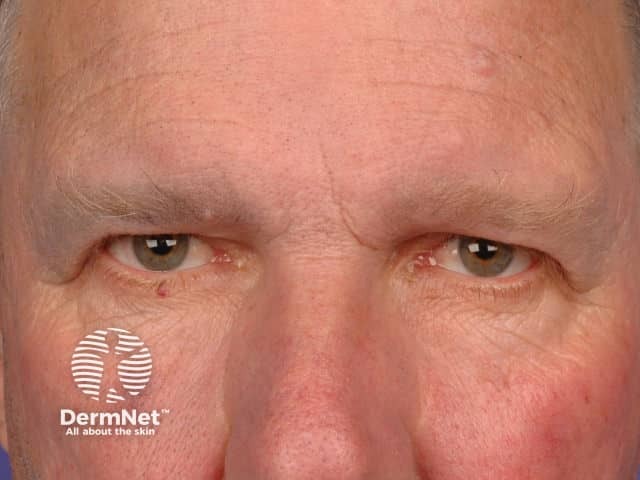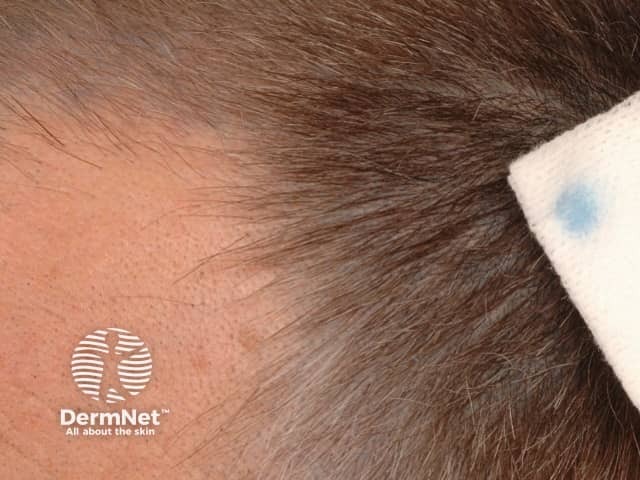Main menu
Common skin conditions

NEWS
Join DermNet PRO
Read more
Quick links
Author: Dr Duncan Lyons, Resident Medical Officer, Gold Coast University Hospital, Gold Coast, Queensland, Australia. Medical Editor: Dr Helen Gordon, Dermatology Registrar, Auckland, New Zealand. DermNet Editor in Chief: Adjunct A/Prof Amanda Oakley, Dermatologist, Hamilton, New Zealand. Copy edited by Gus Mitchell. July 2020.
Introduction Demographics Causes Clinical features Differential diagnoses Diagnosis Treatment Outcome
Submit your photo of apocrine chromhidrosis
Apocrine chromhidrosis is the production of coloured sweat by apocrine sweat glands.

Blue discoloration of the cheeks

Blue discoloration of scalp skin

Blue discoloration wipes off with an alcohol swab
Apocrine chromhidrosis is rare. It usually starts after puberty once the apocrine glands have matured, but has also been reported in infants. Chromhidrosis occurs in both sexes.
Apocrine chromhidrosis is due to lipofuscin granules in the apocrine sweat glands. It is thought that lipofuscin is produced from the oxidation of unsaturated fatty acids within the gland. Higher levels of oxidation result in darker colours. It is unknown why this happens.
Apocrine chromhidrosis presents with coloured sweat localised to the distribution of the apocrine glands in the axillae, on the face (particularly the cheeks), breast areolae, and anogenital regions.
Sweat may be coloured blue, black, green, brown, or yellow, depending on the oxidation state of the lipofuscin, staining the skin and clothing. It is noticed by the patient particularly after exercise or emotional stress, and can result in having to change clothing multiple times each day.
The secretion of coloured sweat can be preceded by a prickly sensation or warmth on the affected skin.
Apocrine chromhidrosis must be distinguished from pseudochromhidrosis and eccrine chromhidrosis.
Pseudochromhidrosis is sweat that becomes discolored after it has been secreted. It is more common than chromhidrosis.
Eccrine chromhidrosis is the production of coloured sweat from the eccrine sweat glands.
Apocrine chromhidrosis is usually diagnosed clinically. The following may be used to confirm the diagnosis:
Other tests may include:
Treatments that have had some success in apocrine chromhidrosis include:
These treatments temporarily reduce apocrine sweating and the discoloration recurs as the effects on sweating wear off.
Apocrine chromhidrosis is a benign chronic condition. It slowly regresses with advancing age as the apocrine glands gradually become less active.